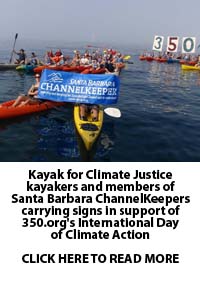A passenger in a plane flying low over the remote tropical island of Yap last week would have spotted a large SOS message written in coconuts.
It read “SOI 350” — the SOI stood for Save Our Islands — and was arranged by students at Yap High School, for 350.org‘s International Day of Climate Action. (The number 350 refers to the amount of carbon dioxide, in parts per million, that scientists consider a sustainable amount to get a handle on climate change; the current amount is 390 and growing.)
Yap is one of four states in the Federated States of Micronesia, a Pacific island nation on the frontlines of climate change.
“People here may not know the science behind climate change, or the politics,” said Ross Perkins, the teacher who organized the coconut message, “but they are aware that it’s happening.”
Last December, unusually high tides inundated islands across Micronesia. On an isolated string of atolls, the sea swept away homes and eroded shorelines. Saltwater bubbled up from the ground, destroying taro, banana and sweet potato crops. FSM President Emanuel Mori declared a nationwide state of emergency, and relief rice was shipped to many atolls, a voyage that takes up to three weeks and happens only several times a year.

“Many atoll communities are headed toward the state of perpetual humanitarian assistance,” said Charles Fletcher, a University of Hawaii coastal geologist and co-author of a report due out soon on food security and climate risks in FSM. “A simple hole in this chain of command could literally lead to starvation on some of these islands.”
Meteorology in Micronesia is influenced by the El Niño Southern Oscillation. During El Niño years, sea surface temperatures in the western Pacific warm: sea level falls and Micronesia experiences drought, which can lead to crop failure. In La Niña years, the western Pacific cools: rainfall is plentiful and sea level rises, which can lead to devastating high tides, like the one that occurred last December.
In the past, there have been several-yearlong transitions between El Niño and La Niña, when food production is more stable across Micronesia, but these transitions have diminished in length over the last three decades.
“There is a common belief in the science community that this is partly because of climate change,” said Rashed Chowdhury, principal research scientist at the Pacific ENSO Applications Climate Center, whose paper on sea-level variability in the western Pacific will appear next year in the journal Weather.
Both Chowdhury and Fletcher agreed that building awareness must be a priority.
Clearly, Perkins agrees. Last week, his students at Yap High School learned why 350 was an important climate number, and when 350.org posted the photo of their coconut message, Internet users around the world learned that people actually live in a place called Yap.
Domíngo Techur, the principal at Yap High School and a recent climate activist, has enjoyed checking 350.org for posts from other far-off lands.
Techur watched the beach in his village succumb to the sea but didn’t put the climate pieces together until he watched An Inconvenient Truth.
“I guess it was just the boldness of the truth,” he said. “We are the first to go.”
Sign up for our free e-newsletter.
Are you on Facebook? Become our fan.
Follow us on Twitter.




